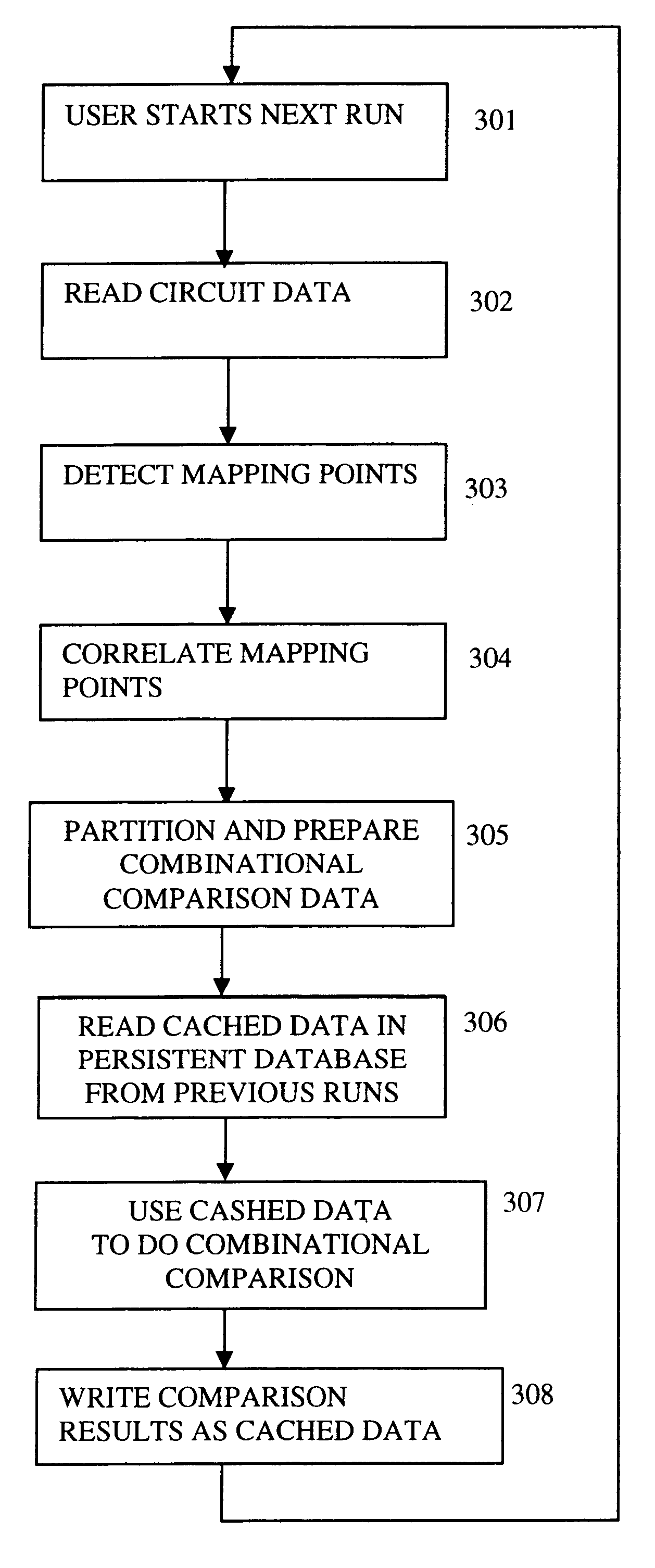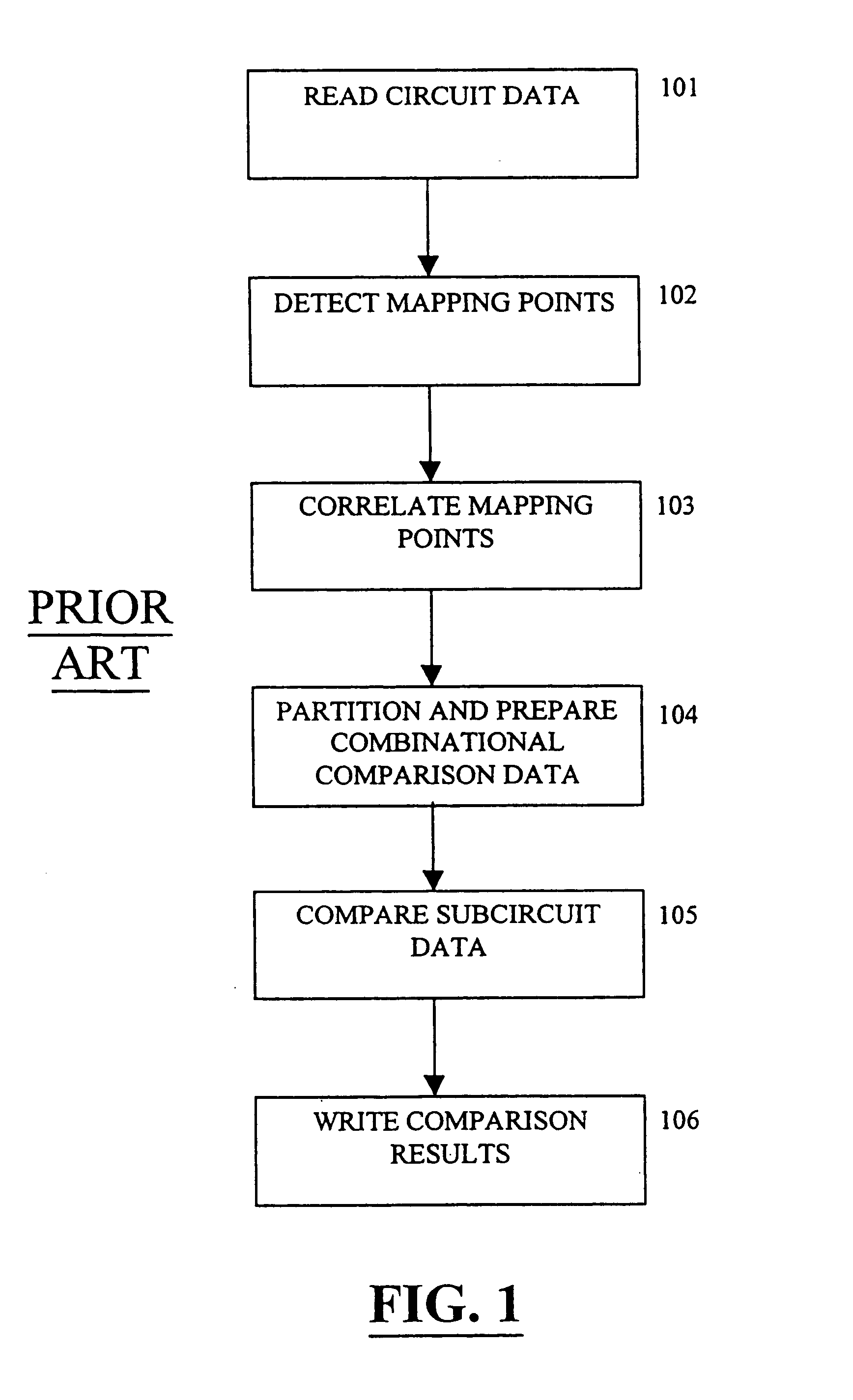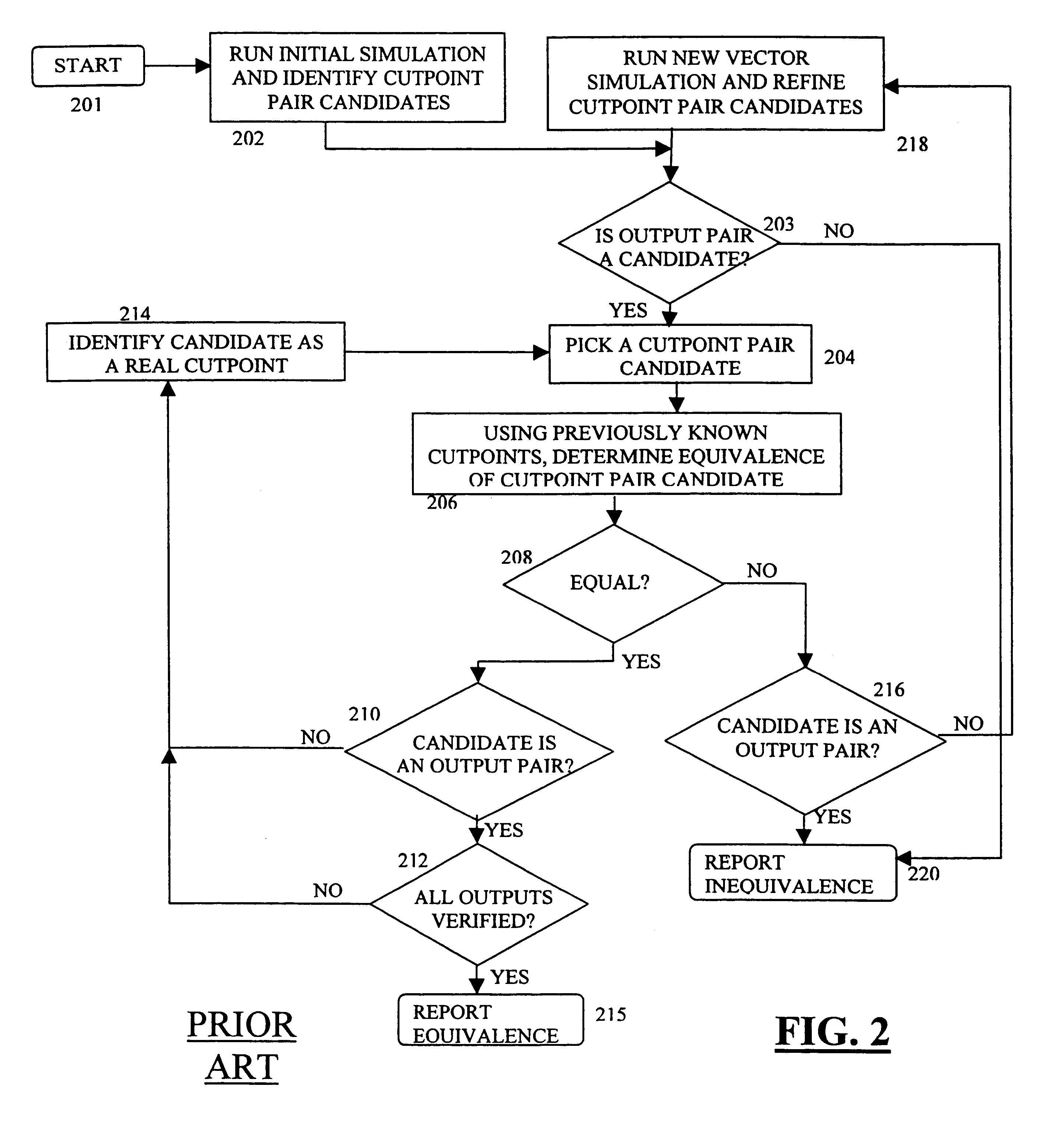Method for rapidly determining the functional equivalence between two circuit models
- Summary
- Abstract
- Description
- Claims
- Application Information
AI Technical Summary
Benefits of technology
Problems solved by technology
Method used
Image
Examples
Embodiment Construction
[0055]The present invention relates to a large flow system where a system such as that described by Kurosaka et al. is used multiple times on many different pairs of circuits, usually all different versions of the same circuit. The present invention provides a method to learn knowledge from the comparison of one portion, to cache this knowledge in memory, and to reuse this information in a later run.
[0056]The preferred embodiment uses three different attribute table data structures, all implemented using hash tables. The three tables are a numbering table used to obtain a unique number for any gate output; an Equivalence table used to store previously-discovered equivalencies between pairs of circuit portions; and a Vector table used to store useful test vectors for circuit portions with input names.
[0057]The Equivalence and Vector tables are used to store and access cached information learned from previous comparisons. One class of learning is storing the equivalencies learned in t...
PUM
 Login to View More
Login to View More Abstract
Description
Claims
Application Information
 Login to View More
Login to View More - R&D
- Intellectual Property
- Life Sciences
- Materials
- Tech Scout
- Unparalleled Data Quality
- Higher Quality Content
- 60% Fewer Hallucinations
Browse by: Latest US Patents, China's latest patents, Technical Efficacy Thesaurus, Application Domain, Technology Topic, Popular Technical Reports.
© 2025 PatSnap. All rights reserved.Legal|Privacy policy|Modern Slavery Act Transparency Statement|Sitemap|About US| Contact US: help@patsnap.com



